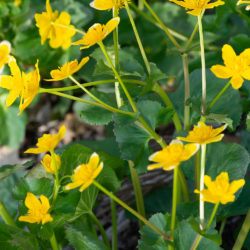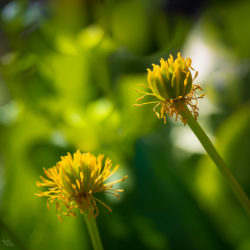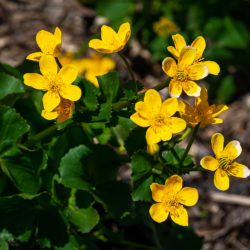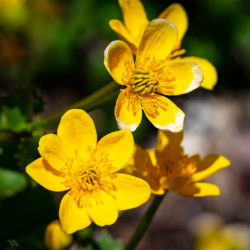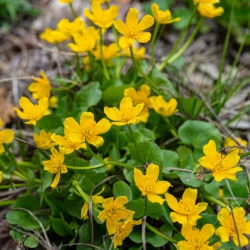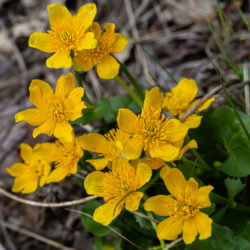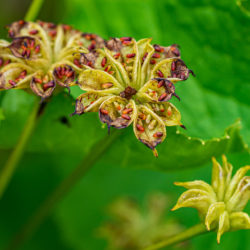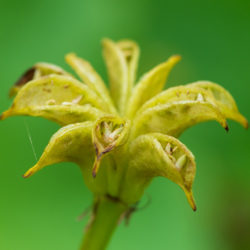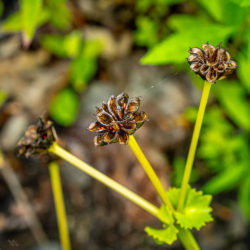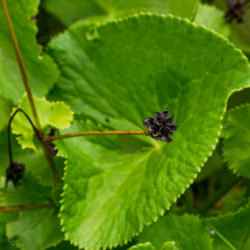Etymology
Caltha is Latin for a plant with yellow flowers; palustris is Latin for marsh-loving.
Native Habitat
Sunny bogs, marshes, and wetlands
Garden Uses
Beautiful addition to open wet areas for spring color. They can go dormant in dry summers, but often survive. They are generally carefree if protected from drought and drying winter or early spring wind. Great for naturalizing, forming thick carpets in ideal situations, for use in water and rain gardens, or do fine in regular garden soil.
Overview
A mounded, perennial, succulent herb, 1 to 2 feet tall, with glossy green leaves and showy yellow flowers that appear in early spring in sunny bogs, marshes, and wetlands. Despite the common name, flowers resemble large buttercups.
Leaves and Stems
Deep green, glossy, simple leaves are heart- or kidney-shaped, and smooth-edged, or with small scallops. Basal leaves grow on long stalks (petioles), and reach up to 7 inches across, and gain maturity after flowering is completed. Upper leaves are alternate, smaller and short-stalked. One leaf develops per node. Stems are green, branching, thick and hollow. Roots are rhizomatous.
Flowers
Bright yellow, cup-shaped, and shiny, with no true petals, but with 5 to 9 petal-like sepals growing around 50 to 100 yellow stamens. Total diameter per bloom is 1-2 inches. Flowers grow in clusters, blooming in late April or May in Maine.
Fruit/Seed
Pods develop immediately after flowering (June), and split open when dry to reveal small seeds.
Animal Associates
Attractive to pollinators. While people see the flowers as pure yellow, insects are attracted to ultraviolet coloration of the outer edges called “bee’s purple.”
Propagation
Division of clumps or by seed. Seeds should be sown as soon as they ripen, typically in June, and should be protected from drying out. Flowering typically takes 3-years for seed grown plants.
Ethnobotanical Uses
While leaves and flower buds are referred to as edible, they need to be cooked with several changes of water to remove toxins, and the juice of the plant can cause skin blisters during harvest. Livestock can also be poisoned by eating the plant.
Garden Location
Library Garden (see garden map)
Anecdotal Information
This plant is considered a living fossil, due to its primitive flower structure and wide distribution.
Sources
Lady Bird Johnson Wildflower Center
Plant Profile by Kate O’Dell

